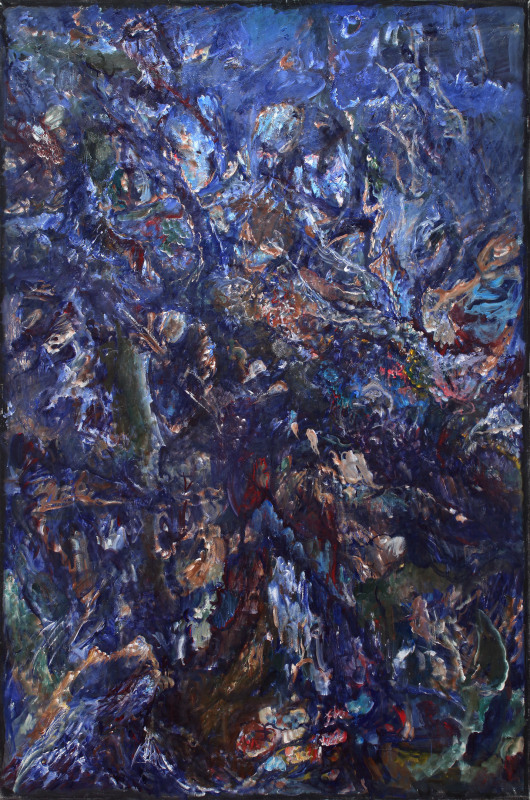
Hyman Bloom, Woods in Lubec, ca. 1975, oil on canvas, 72 x 48 inches
Alexandre Gallery is pleased to present a selection of major paintings and drawings by Hyman Bloom, in celebration of the artist’s retrospective exhibition at the Museum of Fine Arts Boston, Hyman Bloom: Matters of Life and Death, opening July 13th, and the publication of a new monograph on the artist: Modern Mystic: The Art of Hyman Bloom by Henry Adams, Robert Alimi and Debra Bricker Balken, distributed by DAP. Alexandre Gallery is the exclusive representative of the artist’s estate.
Bloom’s oeuvre is captivating for his incandescent, jewel-toned treatment of mystical and corporeal matters that range in style from painterly realism to semi-abstract expressionism. His work draws upon his immigrant heritage, interest in Eastern religions, and themes of death and human mortality. In his paintings of human corpses, skeletal fish and trees, archeological excavations, synagogues, Christmas trees, jewels and stones, Bloom explores underlying form and contemplates concepts of beauty and spirituality, of life and death.
A somewhat unconventional figure during the advent of Abstract Expressionism, Bloom painted representational works. He remained aloof from the New York art scene, preferring his Boston studio and library. His work was introduced to a national audience and caught the attention of Jackson Pollock and Willem de Kooning when thirteen of his paintings appeared in Americans 1942: 18 Artists from 9 States at the Museum of Modern Art. This led to widespread recognition and several major museum exhibitions.
Critic Debra Bricker Balken writes in Modern Mystic: The Art of Hyman Bloom:
The art world, with its fast pace, ongoing turnover of interests, and voguish audiences, never held him. He always knew he was an anomaly. His only satisfaction was to mine the possibility for an art that could transcend temporal boundaries by alluding to a world beyond the material.
Bloom overlays the temporality of human life, of bodily decay, with that of the everlasting spiritual realm, and vice versa, so that the realms become imbued with the other’s qualities. In this exhibition, luminous paintings of torsos, limbs, and gutted fish appear sacrosanct; a skeletal portrait of a rabbi and a fleshy Jewish man appear macabre; and swirling depictions of seances, forests, and seascapes occupy a liminal space and time. Through such renderings, Bloom remarked that “the paradox of the harrowing and the beautiful could be brought into unity.” And elsewhere said “spiritual life cannot be delegated; true spiritual experience can only come from within, and it is only through individual efforts to deepen the process that a state of grace can be achieved.”